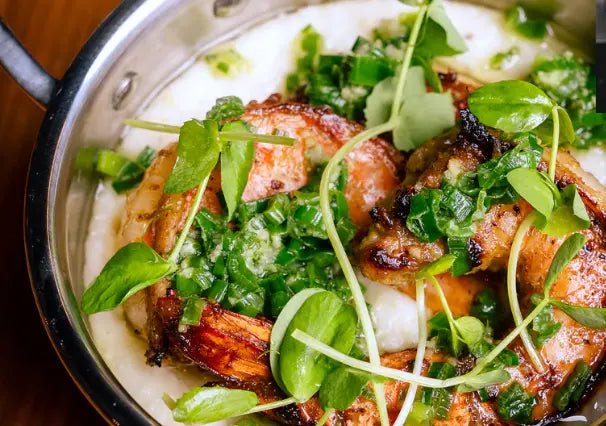SOFT-BOILED EGGS
Soft-boiled eggs are quick and easy to prepare, and are perfect for dipping in buttered toast soldiers (always a hit with kids!). To have the perfect firmness of white, and runniness of yolk, gently place your egg into a pan of rapidly simmering water for five minutes.
Make sure the eggs are completely immersed in the water, a moderate sized CRISTEL® stainless-steel saucepan is ideal for this. Timing is essential, it is always better to set a timer than to take a rough guess. If cooking more than three eggs at once, you may need to increase cooking time accordingly.
SCRAMBLED EGGS
Scrambled eggs are a delicious way to start the day for a quick breakfast packed with proteins. Lightly whisk 2 large eggs with a dash of cream or milk and a pinch of salt until combined. Heat a stainless-steel frying pan to a medium-low heat, add a knob of butter, allowing it to melt but not burn. Pour in the egg mixture and let it sit, without stirring, for 20 seconds.
Stir with a wooden spoon, lifting and folding from the bottom of the pan. Allow to sit for another 10 seconds before folding again. Continue until the eggs are softly set and still slightly runny in places. Remove from heat and leave for a moment to complete cooking. This will result in perfectly velvety scrambled eggs for you to enjoy.
POACHED EGGS
Poached eggs are divine, look great on the plate and can be eaten at breakfast, lunch or dinner! They can simply be eaten on toast, or on top of salads, soups and vegetables, or as a nice addition to any breakfast bowl. There are a few things to keep in, mind to obtain the perfect poached egg. The fresher your eggs, the better – this ensures a thicker white which better holds its shape around the yolk during cooking. Bring a pan of water with a dash of white vinegar to a simmer (at least 5cm deep), do not add salt as this can cause the white to break up.
Crack your egg into a vessel (a small cup or bowl, for example) to make it easier to slide them into the pan. Create a gentle whirlpool by stirring so the white can wrap itself around the yolk once you slowly tip the egg into the center. Cook for 3-4 minutes until the white is set. Lift the egg out gently with a slotted spoon and drain it on kitchen paper to remove any excess water. Enjoy your perfectly poached eggs while they are still hot.
SUNNY SIDE UP EGGS
Eggs done sunny side up is possibly the fastest and simplest way to prepare your eggs. You can also make a number of eggs this way in the same pan. Here, it is all about temperature. Bring a stainless-steel frying pan to a medium-low heat to ensure tenderness, if the heat is too high, the eggs will become rubbery. Add a little olive oil or butter, both work well it’s just a matter of personal taste. Be careful not to burn the oil/butter, but once it has warmed up you can crack your eggs directly into the pan. Cook until the tops of the whites are set, but the yolk is still runny.
HARD-BOILED EGGS
Hard boiled eggs are perfect for salads and sandwiches or for a yummy lunchbox snack. They are as simple to prepare as their soft-boiled counterpart, it’s just a matter of timing. Follow the same cooking process as for soft-boiled eggs, but this time you’ll be cooking the eggs for 7-8 minutes over a medium high heat. When you remove the eggs from the pan, run them under cold water to stop them from cooking further, and also making them easier to handle and peel.

















